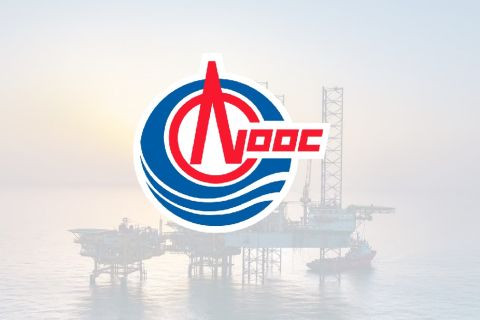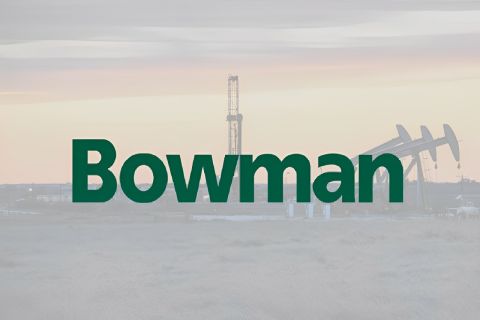
The Kashagan oil field in the Caspian Sea features artificial islands. (Source: Eni)
HOUSTON—There is a wildcard among the world’s oil market players that some believe could be a game-changer, throwing a production curveball.
“It’s such a fascinating project. From the technical point of view it’s rich,” Daniel Johnston, president of upstream oil and gas consultancy Daniel Johnston & Company Inc., said during the recently held Association of International Petroleum Negotiator’s (AIPN) International Petroleum Summit.
Located in the northern Caspian Sea offshore Kazakhstan, the shallow-water Kashagan Field has some of the highest pressures in the world along with high sour gas content—which is mostly reinjected—and what Johnston described as one of the world’s most sensitive ecological environments.
The Kashagan reservoir is about 4,200 m (13,780 ft) below the seabed and has a high pressure of about 11,168 psi, according to operator North Caspian Operating Co. (NCOC). The field’s offshore facilities are located on artificial islands, considering logistical challenges posed by thick ice during parts of the year. NCOC and partners—Eni, KazMunayGas, Royal Dutch Shell, Total, ExxonMobil, CNPC and Inpex—restarted production in late 2016 after overcoming a myriad of challenges that included leaks and ballooning costs that rose to about $50 billion.
However, “Kashagan is on the verge of finally, potentially meeting some of its promises of the past,” Johnston said. “In the next couple of years it could easily be producing over a million barrels per day or more than it’s producing now.”
By year-end 2017, Kashagan production is set to increase to about 370,000.
The multiphase development is part of an effort to develop between 7 billion barrels (Bbbl) and 9 Bbbl of reserves from the Kashagan, Kashagan Southwest, Kalamkas, Aktote and Kairan fields.
With transportation infrastructure in place, Johnston said Kashagan could reach up to about 1.8 MMbbl/d without much trouble.
But he questioned what impact an extra million or so barrels of oil per day could have on the market within the next three years.
“Kashagan on its own could be a global game-changer,” Fereidun Fesharaki, founder and chairman of the London-based FGE oil and gas consultancy, said in response. An increase of 1 MMbbl/d to 1.5 MMbbl/d in the next year or two could create global crash, he added.
Oil prices increased this week on hopes that OPEC members will agree to extend output cuts in an effort to improve market conditions. West Texas Intermediate crude oil was trading for nearly $51 per barrel, with Brent at $53.80/bbl, on Monday morning.
“The decision (to extend cuts) seems to be almost a done deal,” Bjarne Schieldrop, chief commodities analyst at SEB Markets, said in a Reuters article. “There seems to be a very high harmony in the group.”
OPEC Secretary-General Mohammad Barkindo said on May 22 that he saw a growing consensus among the group’s members as well as non-OPEC producers on the duration of an extension. Saudi Arabia and Russia support extended the cuts until March 2018.
Last week, the news agency reported that Kazakhstan, which is not an OPEC member country, supported extending the oil output cut. However, the government wants to renegotiate its production ceiling, considering it plans to increase production at Kashagan.
“We must support efforts to limit output, because the balance on the market has not been restored yet,” Kazakhstan Energy Minister Kanat Bozumbayev said in the article.
“(But) we will not be able to join this (extended cut) agreement automatically on the same terms, but we will discuss to what degree we can participate in it.”
Kazakhstan joined the current OPEC and non-OPEC pact in November, pledging to cut its output by 20,000 barrels per day to about 1.7 million barrels per day (MMbbl/d). However, a report released by the International Energy Agency in March showed Kazakhstan’s output increased to more than 1.8 MMbbl/d in February. Kazakhstan’s production continued to rise in March, according to the IEA.
The country’s production, however, is below that of some other non-OPEC countries that agreed to the existing pact. Russia produces just over 11 MMbbl/d.
Velda Addison can be reached at vaddison@hartenergy.com.
Recommended Reading
CNOOC Makes Ultra-deepwater Discovery in the Pearl River Mouth Basin
2024-09-11 - CNOOC drilled a natural gas well in the ultra-deepwater area of the Liwan 4-1 structure in the Pearl River Mouth Basin. The well marks the first major breakthrough in China’s ultra-deepwater carbonate exploration.
GeoPark Announces Production Start at Argentina’s Confluencia Norte
2024-11-12 - GeoPark expects production at the Confluencia Norte Block in Rio Negro, Argentina to reach its peak within 90 days of startup.
Bowman Consulting to Manage, Monitor Delaware Basin Wells
2024-10-14 - Bowman Consulting Group’s scope of work includes conducting detailed field surveys of above-ground infrastructure assets across well sites of up to to 8 acres.
TotalEnergies Awards SBM Offshore FPSO GranMorgu Development Contract
2024-11-15 - SBM will construct and install a floating production, storage and offloading vessel for TotalEnergies alongside its partner Technip Energies, the company said.
Oceaneering Acquires Global Design Innovation
2024-10-30 - Oceaneering purchased Global Design Innovation, the only provider certified by the United Kingdom Accreditation Service (UKAS) to perform remote visual inspection using point cloud data and photographic images.
Comments
Add new comment
This conversation is moderated according to Hart Energy community rules. Please read the rules before joining the discussion. If you’re experiencing any technical problems, please contact our customer care team.






